#aircraft engine maintenance and repair
Explore tagged Tumblr posts
Text
aircraft engine maintenance and repair
In our Repair Management program we offer aircraft engine maintenance, repair and overhaul (MRO) services. We operate hand-in-hand with our customers and act as an internal department to provide a seamless experience.
aircraft engine maintenance and repair
0 notes
Text


From dry fit for bearing measurements yesterday to fully closed and assembled today. I’m switching tracks this week from TCM engines back to a IO-540 Lycoming that had a prop strike. The work involved in the inspection and repair following a prop strike is usually as much as an overhaul. Everything must still be disassembled, inspected, and major components sent for NDT. The list of parts required might not be as long, depending on the situation, because the mandatory parts replacement of an overhaul isn’t normally applicable. Sometimes the damage is significant enough to warrant an overhaul for the sake of costs, but luckily for this customer that wasn’t the case.
9 notes
·
View notes
Text
How Engine MRO Demand Will Boost in North America?
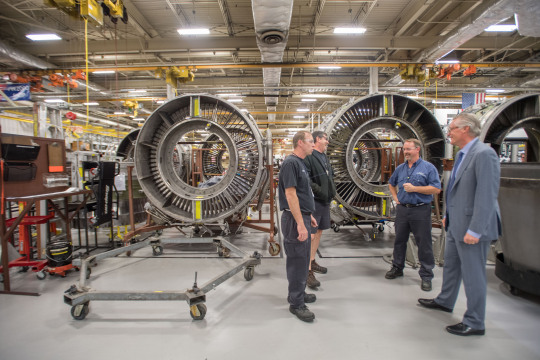
North America is expected to grab 20% of the global engine maintenance repair and overhaul industry during the following ten years. This emphasizes that by 2032, the North American engine fleet will have risen by 7%, from 19,300 operational engines this year to more than 22,200 in 2032.
Over 26,000 engine repair events are anticipated over the next ten years, representing a 0.5% CAGR (compound annual growth rate). Although this number is small, MRO spending should rise by 5% over the next decade, in the majority as a result of the industry’s total growth. Here, aircraft maintenance and repair become major things that flourish in the sector.
In the total of $93.6 billion, North American Engine MRO demand expectations between 2023 and 2032 are mentioned below:
CFM International CFM56 - 24%
General Electric CF6 - 14%
General Electric CF34 - 14%
International Aero Engines V2500 - 9%
General Electric GENX - 8%
General Electric GE90 - 8%
Pratt & Whitney PW4000 - 6%
Rolls-Royce Trent - 5%
Pratt & Whitney PW1000G - 4%
CFM International Leap - 3%
Others - 5%
The CFM International CFM56 is expected to account for the majority of engine MRO aircraft maintenance spending, taking 24.3% of the market, followed by General Electric's CF6 and CF34, all of which have 14% market share.
Top engine MRO demand by North American Airlines is listed below in U.S. billions:
American Airlines - $9.7
United Airlines - $7.5
Delta Air Lines - $7.0
Southwest Airlines - $6.1
SkyWest Airlines - $3.7
Spirit Airlines - $3.3
JetBlue - $2.9
Air Canada - $2.8
Frontier Airlines - $2.1
Endeavor Air - $1.6
0 notes
Text
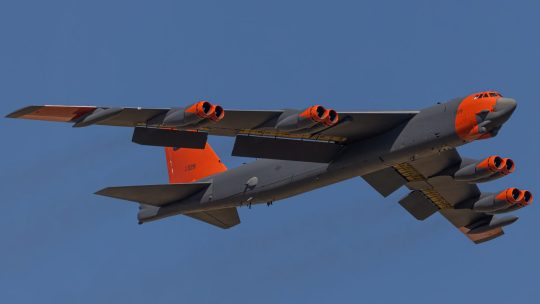
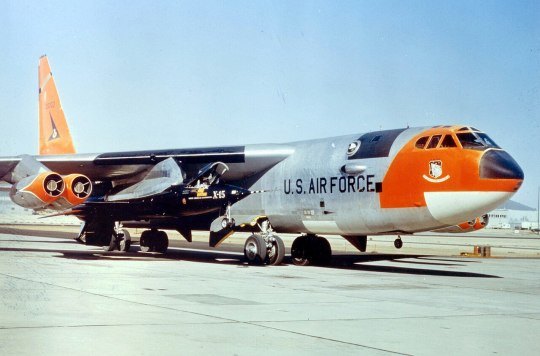
A U.S. B-52H Bomber Has Received An Incredible Throwback Color Scheme
The B-52H 61-0028 has the forward fuselage, wings near the wingtips, engine nacelles, and vertical stabilizer painted in dayglo orange, contrasting the typical dark gray paint of the Stratofortress.
David CenciottiLast updated: October 1, 2024 4:44 PM
B-52 orange
A U.S. Air Force B-52H Stratofortress bomber has been spotted sporting an amazing retro color scheme recently. The BUFF (Big Ugly Fat Fellow) was photographed taking off from Tinker Air Force Base, Oklahoma, home of the Oklahoma City Air Logistics Complex, by our friend Rob Stephens at Redhome Aviation, on Sept. 30, 2024.
The B-52H 61-0028 has the forward fuselage, wings near the wingtips, engine nacelles, and vertical stabilizer painted in dayglo orange, contrasting the typical dark gray paint of the Stratofortress.The NB-52sThe Oklahoma City ALC
We reached out to Rob who provided us a lot of additional details about this cool paint job.
“Somewhere around the middle of September 2023, B-52H 61-0028 arrived at Tinker AFB after a training sortie,” he told us in an email. “I don’t have the full details and the damage appears far below what would necessitate an Accident Investigation Board, but I understand the flaps were over sped sometime before the landing at Tinker. Scuffs and dents are visible on the side of the aircraft, as if the flaps made physical contact with the fuselage. Crews from Barksdale were dispatched to Tinker to inspect the aircraft and prepare her for the flight home”.
On Sept. 22, 2023 the B-52 was flown back to Barksdale Air Force Base, Louisiana, “with her flaps-up, making quite the stunning departure”, says Stephens.
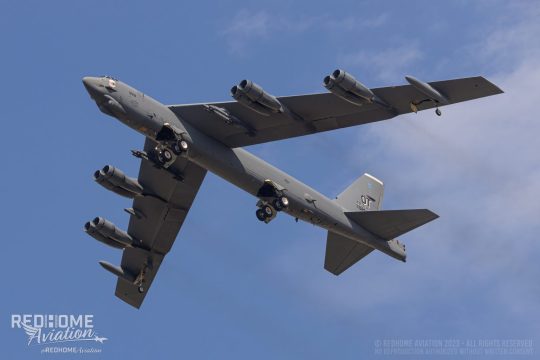
Flaps up departure.
“One of the greatest things about living where I do is being able to photograph the fantastic work of the 565th Aircraft Maintenance Squadron as the B-52s go through programmed depot maintenance. While a rare occurrence, there are times where the aircraft will fly “naked” without paint between completion of PDM (Programmed Depot Maintenance) and their appointment for paint.”
PDM is a very complex process that each B-52 undergo every four years, made of heavy checks, during which the aircraft is almost completely disassembled and each part is inspected and all defects are fixed before they are rebuilt and sent back to their home stations as they were (almost) brand new. Even the paint is stripped off the entire airframe so that technicians can analyze every part of the aircraft and make repairs where needed.
B-52H 61-0028 “Wolfpack” flew on Aug. 26, 2024 mostly without paint and an orange rudder, that showed she was headed towards a special paint job.
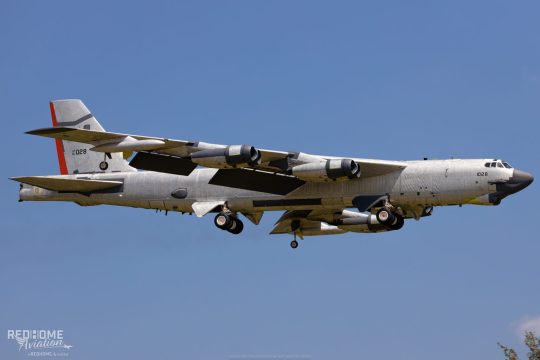
B-52H 61-0028 “Wolfpack” on Aug. 26, 2024. Only the rudder is pained in orange.
“The final paint scheme on 61-0028 is a heritage back to the early days of the [NASA] B-52 testing campaigns, such as NB-52A 52-0003, which carried the North American X-15 in 1959. This paint is similar to the famous NB-52B 52-0008, but more closely resembles 52-0003. Her forward fuselage, wings near the wingtips, engine nacelles, and vertical stabilizer are painted in dayglo orange, contrasting the typical dark gray paint of the Stratofortress. Her “OT” and “49 TES” tail markings, black arrow point on the tail, and “U.S. Air Force” on the fuselage will be applied while she is at Barksdale AFB, LA.”
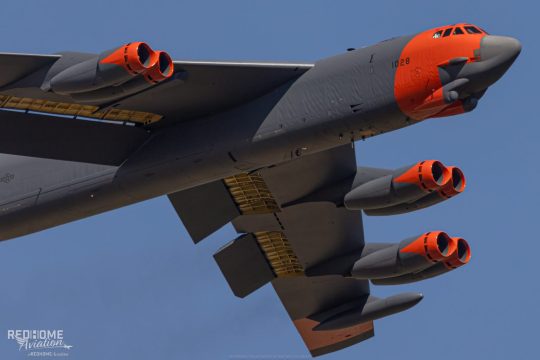
Close up on the B-52H 61-0028 taking off from Tinker AFB on Sept. 30, 2024.
The NB-52s
In mid-1957, NASA decided to switch the launch aircraft (or “mothership”) for the X-15 hypersonic research project from the B-36 Peacemaker to the B-52 Stratofortress. The B-36 was nearing the end of its service life, and it was anticipated that maintaining a single B-36 after its retirement would be difficult due to the lack of spare parts. As the X-15 program moved forward, the NB-52A and NB-52B Stratofortresses were selected to serve as the launch platforms, with the NB-52B 52-0008 continuing in this role until its final mission in November 2004, while the NB-52A 52-0003 was retired earlier in 1969.

NB-52A 52-0003 with X-15
The NB-52B essentially functioned as a flying launch pad, operating at altitudes of nine miles to provide the necessary propellants, gases, and electrical power to the rocket planes it carried. To enable this, the aircraft’s right wing was reinforced and fitted with a pylon capable of supporting payloads exceeding 50,000 pounds—about a fifth of the aircraft’s own weight. This capacity made the Stratofortress an invaluable tool for numerous aeronautical research projects, including those that eventually influenced the Space Shuttle program.
The re-engineered NB-52B helped prove the viability of the Space Shuttle’s steep gliding landings by launching several wingless lifting bodies, which demonstrated the feasibility of such an approach. Additionally, the NB-52B played a critical role in testing parachutes that recovered the Space Shuttle’s solid rocket boosters and the drag chute used during Shuttle landings. Despite the aircraft’s age and rising maintenance costs, it continued to be used for various advanced research programs, including launching remotely piloted vehicles, drones, and experimental payloads in the 1970s and 1980s.
Beyond its role in launching aircraft, the NB-52B also contributed to research on wake turbulence, served as a gunnery target, and tested pollution-reducing fuel additives, once flying as a ten-engine jet with additional engines mounted beneath the bomb bay. Notably, during the X-38 program, it deployed the largest parafoil in history, which had a surface area larger than a Boeing 747’s wing.
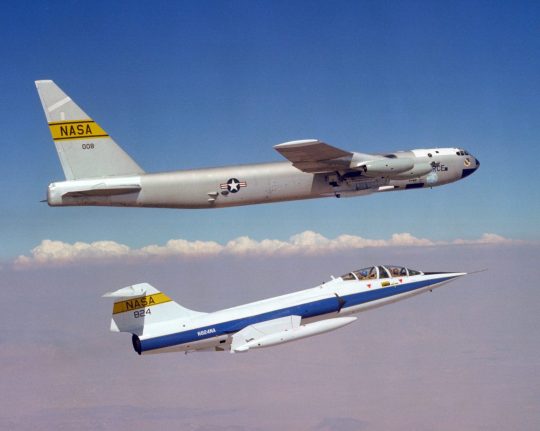
A NASA Lockheed TF-104G Starfighter (serial N824NA) flies chase on the NASA Boeing NB-52B sporting a silver paint scheme during a DAST ARW-1 captive flight on 14 September 1979. The TF-104G was produced for Germany with the USAF s/n 63-3065, Luftwaffe serials 27+37. It was transferred to NASA in 1975 as N824NA. After retirement it went to the California Polytechnic Institute and is today on display at the Estrella Warbirds Museum, Paso Robles, California (USA). The Boeing RB-52B-10-BO Stratofortress (USAF s/n 52-0008) was converted to the NB-52B and retired on 17 December 2004. since then it is on permanent display at the west gate of Edwards Air Force Base, California. (NASA photo by Bob Rhine)
The NB-52B’s final mission was in 2004 when it launched the X-43A, which achieved Mach 9.6 with the world’s most powerful air-breathing engine. After decades of service and a vital contribution to aviation and space research, the aircraft was officially retired on December 17, 2004, at a ceremony at NASA’s Dryden Flight Research Center.
At the time of its retirement, “Balls 8” (from its NASA tail number, 52-008, where the leading zeroes and the final digit are commonly referred to as “Balls” in military slang) was the oldest B-52 still in active service and the only one not of the H model. It also had the fewest total flight hours of any operational B-52.
The aircraft is now on permanent public display near the north gate of Edwards Air Force Base in California.
The Oklahoma City ALC
As mentioned earlier, Rob Stephens lives near Tinker AFB, allowing him to photograph the aircraft undergoing PDM at the Oklahoma City Air Logistics Complex. The Oklahoma City Air Logistics Complex is a key unit within the Air Force Materiel Command and the largest single-site employer in Oklahoma, with over 9,000 military and civilian personnel delivering combat power for the nation. This massive complex is responsible for programmed depot maintenance and modifications on aircraft like the KC-46, KC-135, B-1B, B-52, E-3, and Navy E-6. It also handles maintenance, repair, and overhaul of engines including the F100, F101, F108, F110, F117, F118, F119, F135, and TF33, supporting not only the Air Force but also the Navy, Marine Corps, and foreign military sales. In addition to its maintenance and repair work, the complex develops and sustains mission-critical software for the Air Force and other customers, and it provides worldwide aircraft battle damage repair for multiple weapon systems.
The complex is comprised of four groups working together to provide top-tier maintenance and support. The 76th Aircraft Maintenance Group specializes in depot maintenance for B-1, B-52, KC-135, E-3, E-6, and special mission fleets, offering full overhaul services, FAA-certified repairs, modifications, and flight testing. The 76th Commodities Maintenance Group manages depot-level maintenance of aircraft and engine parts for a wide range of systems, including the A-10, B-1, B-52, C-17, F-15, F-16, and more, and serves as the Air Force Technology Repair Center for air and fuel accessories. The 76th Maintenance Support Group ensures the continuous operation of one of the Department of Defense’s largest industrial complexes, maintaining facilities, tools, and equipment needed for the depot’s mission. Lastly, the 76th Propulsion Maintenance Group is the leading DoD engine repair and overhaul center, responsible for maintaining engines used in bombers, tankers, fighters, and special mission aircraft.
Originally redesignated as the 76th Maintenance Wing in 2005, the organization was inactivated in 2012 when the Oklahoma City Air Logistics Center was restructured as the Oklahoma City Air Logistics Complex. The complex now operates under the Air Force Sustainment Center at Tinker AFB, one of three key sustainment centers in the Air Force.
@TheAviationist.com
14 notes
·
View notes
Text
This is my airline human-cybertronian airline idea. I hope yall enjoy!
Feel free to add any ideas!
Soul-Spark Airways:
This is a commercial airline, technically. It was created in Ireland. They had gotten the idea of letting bots stay in their country after finding some trying to get around unnoticed. So they decided to implement bots into their population, and of course, they needed jobs, so this airline was created for both humans and bots to work together.
Because of the bots, the company became very versatile in terms of travel. As bots with an aircraft alt-mode can fly through space, but only for cargo transportation, and only one or two humans come along. The humans are called C-R (Cargo-Runners), The bots are called S-R (Space-Runners). The overall job for both bot and human is called S-T (Space-Transportation). This job is actually proven to be very dangerous as it, of course, travels to Cybertron or Canimus to deliver or pick up cargo, so it is likely to run into some hostility along the way. But they also do cargo runs on Earth between nation to nation.
Cargo-Runners:
C-R's are humans responsible for keeping track of the cargo and its security. Since they are small enough to walk around inside and sleep in the bots alt-mode, this job is, of course, mostly for humans. Unfortunately, during travels through space, they are targeted quite often, so having combat training is a must. It is also required of them to know maintenance and logistics. Sometimes, their bot companion will need repairs when there aren't any Medi-maintenance around, and they handle their own logistics.
Space-Runners:
S-R's are MASSIVE bots who transform into the alt-mode of a commercial aircraft. Except their engine systems are 10x's stronger than regular aircrafts, especially since they have the engine power to fly through space. They do not carry regular passengers, not humans, at least because they aren't normal aircrafts. Occasionally, they'll transport one or two bots. But for the most part, they travel with their C-R, and that's it. Passengers must board a regular aircraft that is part of the company.
These guys are given the right of way on ramp and the runaway because, again, they have extremely powerful engines, so all the normal aircrafts must wait before doing pushback from their gates. Unless they want to be responsible for a tragic accident.
S-R's have a built-in oxygen system in their alt-mod, as well as gravity. This is so the C-R can breathe normally and do their job without issues. In case the system so happens to malfunction, there are oxygen masks, and C-R's are required to wear magnetic boots.
On a added note: S-R's are very protective of their C-R's. So don't mess with their C-R's
Medi-Maintenance:
M-M's are basically medics for any bot who works for the airline. The M-M could be bot or human. They all do maintenance on S-R's for the most part, especially heavy maintenance of it is needed. Due to mechanical knowledge of the M-M's, they do maintenance on company vehicles just to keep things flowing without a hitch.
Logistics Attendants:
L-A's handle supply. So if a bot or an aircraft needs a part, L-A's are the people M-M's go to. They order parts and issue them out to specific bots and aircrafts. They can also send out unservicable parts to the airline repair stations or process engine removals for the M-M's. These guys also have several different levels in their jobs, as certain L-A's have access to parts where a regular one doesn't. They can also go out on ramp and deliver parts to a flight or pick up parts from a flight.
Humans stationed on Cybertron/Canimus:
C-R's have to go through heavy security. They have to have a certain badge to have access to be in Cybertron. Their access is different from political figures' access. This is because C-R's could be transporting extremely important or dangerous cargo.
But security is a little easier to get through if they're already stationed on Cybertron. They are already assigned quaters/housing. They tend to remain their usual small size as it is easier to do maintenance on their bot companion that way. So, it is not uncommon to see a tiny company truck driving around with a human inside it going about their business, some bots think it's cute seeing them honk their horn letting them know they're about to pass or come around the corner.
Unfortunately, some bots do not like the fact that there are humans stationed on their planet. So the S-R's are always on high alert when they see their human buddy interacting with other bots. When they see one is being slightly rude towards the human, they intervene immediately.
- Families
Some humans, of course, have children. So the airport on Cybertron they're stationed at already has a school system and daycare in place. These kids sometimes develop Cybertronian slag when interacting with sparklings. It's quite interesting to witness.
Also! These kids end up becoming fluent in the Cybertronian language, as well as their parents. This makes them the maps for new arrival humans 😂
And human children born on Cybertron use the term carrier and sire! Those who were moved to Cybertron still use mom and dad.
Bots stationed on Earth:
Depending on the country, bots are allowed to live amongst humans. Although different countries can give them a difficult time when trying to travel, as some countries are not comfortable with the thought of giant robots, but they'll put up with the process for the most part if it means getting cargo faster.
A lot of humans MUST steer clear when driving around them or just being around them in general. These bots do not always see the humans, so while they try to be vigilant of their surroundings, humans must do their part to be vigilant as well.
- Families
Like humans, bots have their own kids as well. Bots sometimes actually shrink themselves and their sparklings down a lot. Like human children on Cybertron, sparklings get a school system and daycare set up.
Depending on the country, sparklings actually develop certain accents, slangs, and speak the dominant language of the country they're stationed in with their creator! Shockingly enough, these sparklings actually use the term mom and dad of they are born on Earth. Those who were moved to Earth still use carrier and sire.
Protocols (there's more, but I am just going to list the main ones):
Emergency S-R 481 & 559:
Code: Blue
This emergency is when a wounded S-R arrives, emergency. M-M's respond to the emergency while L-A's prep all the parts necessary that the C-R communicated before landing.
This also goes for non S-R bots if in need of medical assistance.
Emergency 278:
Code: Purple
This emergency is for injured humans. It is the other coworkers job to do their best to help them until an ambulance arrives. Such as keeping them still, holding them a specific way, or CPR if they are trained.
Emergency 117:
Code: Red
This emergency is specifically for S-R's and C-R's. If they are traveling through space and so happen to be attacked, C-R will communicate to either bots on Earth or Cybertron/Canimus. Whichever one they are closest to. This normally happens if this a fight S-R can't take without risking the C-R's life to a certain degree. Typically, the S-R are able to defend themselves.
Department numbers:
Space-Transportation: 117
Medi-Maintenance: 481
Logistics-Attendant: 559
Medical Emergency response: 278
#transformers#transformers idw#transformers idw headcanons#my personal headcanons#I'll probably add more later
9 notes
·
View notes
Text
Operation Nestled Dragon
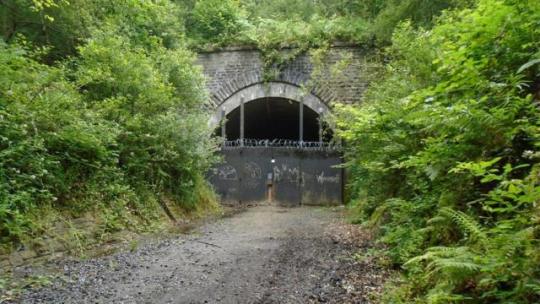
Even before the passage of its iconic Transport Act 1947, the first Attlee ministry had been laying the groundwork for what we would today call a strategic steam reserve. Operation Nestled Dragon, which went into effect as early as December 1945, called for “at least 4,000” steam locomotives to be stored and kept in constant readiness in the event of “any cataclysm which could strain supply.” This was a somewhat arbitrary number; the LMS alone had 8,000 locomotives on the eve of Nationalization. It was believed that a majority of the country’s engines would survive attack during a wartime scenario, the most likely reason to activate the reserve at the time. 4,000 engines kept as a backup to unscathed stock was deemed sufficient. (It has to be said there were no strategic reserves of coaches or trucks, whether planned or even merely discussed!)
These engines and the necessary facilities would be dispersed as needed throughout the country. Bigger towns would have more engines and more MPDs (motive power depots) allocated to them, London having the most. The number of engines kept in a single “strategic MPD” was always limited to 20. In this way, an attack such as an aerial bombardment would be less likely to take out a population center’s entire locomotive stud at once.
To “activate” the reserve, the Minister of Transport was required to approach the Prime Minister and his Cabinet, and a vote be held on the matter.
Strategic MPDs could be crude or elaborate. By design they were severed from the nearest railway, so that no tracks were visible for any overcurious trespasser, potential spies or reconnaissance aircraft to follow. Every MPD had to be able to have these missing rails laid back in “within or under three hours” if called upon. Often, abandoned mines and tunnels were used and their insides fitted out. These ‘naturally-occurring’ locations were codenamed “dragon’s lairs.” Other times a location had to be built from scratch; these artificial MPDs were codenamed “rabbitholes.” Always was there emphasis on keeping the MPDs dry, ventilated and fireproof. Each MPD needed a turntable, a reliable water supply, coal bunkers, storage space for rails, sleepers, a small number of spare parts, adequate headroom and an overhead crane for heavy repairs like boiler swaps, and of course bunks for crews should the reserve be activated and they be based there. Otherwise bunkrooms were vacant, although men on duty for maintenance of stock and depots did find use for them during their shifts.
There was little methodology in place for which engine classes were preferred for the reserve. Great Western engines were less favored as they were built to run on high-quality South Welsh coal, and it was assumed the quality of coal sourced during a crisis would be poor. In any event however, some still “found their way in.” In general however, Eastern, Midland and ex-WD locos formed the majority of the workforce. Every engine belonging to the various military railways such as that at Longmoor were considered part of the reserve too, so it could be said that several pieces of the reserve’s stock were out in the open all along. Also joining their ranks as they came about were BR Standard classes, some built specifically for the reserve. These had neither BR nor serial numbers, being built “off the books.”
At first, engines reserved were simply stored and maintained in the livery they wore at the time of their “reassignment.” As time went on, (and their maintainers became bored,) a semi-official livery of black with white and navy blue stripes was settled upon and applied, one engine at a time. Quickly a crest for the Strategic Reserve was designed by one anonymous artistic crewman, and the reserve’s motto agreed: “Rabbit, rabbit, rabbit,” a superstitious British phrase.
Attlee and Churchill were both said to have toured a strategic MPD at least once. “Here we are in the belly of the beast. You lot have done some splendid work; Britain thanks you,” Attlee had said on his visit. “Men will do anything to play trains away from the wife without interrogation,” Churchill remarked on his, perhaps half in jest.
Thus was the system. As steam on the public or “civilian” British Railways was phased out, further freshly withdrawn engines were added to the reserve stocklist. Much speculation was made as to why coal bunkers and hoppers and water towers continued to be maintained even as the steam engines finally vanished from the national network in August 1968. This was explained away as infrastructure left in place for railtours by preserved engines, and in hindsight must have sounded ridiculous.
As generations of enginemen retired, they had to pass on their skills to the fresh blood. The years then went by without significant cause for alarm. The closest the reserve came to being activated was at the height of the Cuban Missile Crisis in late October 1962; declassified materials confirm that as many as half of the reserve was in full steam awaiting the call, and track gangs were ready and waiting to lay in rails. The crisis ebbed of course, and by the second week of November, the number of engines idle was back to “Normal.”
Margaret Thatcher’s Government planned to shut the program down, but this was averted… just. John Major however couldn’t be dissuaded. Privatization was in full swing, and the Soviet Union had dissolved itself. The reserve suddenly seemed very redundant, (but per its own 1945 definition, not completely,) and the winding down of it all began. On the 1st of December 1998, some 53 years after the beginning of Operation Nestled Dragon, all 4,855 locomotives and their associated depots and crews were demobilized by the Blair ministry and most of the reserve’s documentation declassified. Everything became public knowledge, including the engines themselves, quite literally overnight.
At once, the locos and their facilities were up for auction. Dozens of Strategic MPDs were made into living museums demonstrating how the reserve worked. Many of the engines belonged to classes otherwise thought extinct, such as the LNER Thompson L1s and the LMS Garratts, and here were surviving specimens being pulled out of the metaphorical wardrobe like nothing. The British preservation scene was in a matter of hours awash in perfectly functional engines no one expected to still exist, which coupled together in a line were longer than most if not all of the railways themselves! Several also were sold abroad to the United States and Canada.
The public couldn’t be blamed for this all being such a shock. They hadn’t been prepared.
Their predecessors however certainly were.
#houseboat’s writing#alternate railway history#arh: operation nestled dragon#fictional real life railways#fictional real life engines
14 notes
·
View notes
Text
This spring, engineers at TAP Air Portugal’s maintenance subsidiary huddled around an aircraft engine that had come in for repair. The exposed CFM56 turbine looked like just another routine job for a shop that handles more than 100 engines a year. Only this time, there was cause for alarm. Workers noticed that a replacement part, a damper to reduce vibration, showed signs of wear, when the accompanying paperwork identified the component as fresh from the production line. On June 21, TAP pointed out the discrepancy to Safran SA, the French aerospace company that makes CFM engines together with General Electric Co. Safran quickly determined that the paperwork had been forged. The signature wasn’t that of a company employee, and the reference and purchase order numbers on the part also didn’t add up. To date, Safran and GE have uncovered more than 90 other certificates that had similarly been falsified. Bogus parts have been found on 126 engines, and all are linked to the same parts distributor in London: AOG Technics Ltd., a little-known outfit started eight years ago by a young entrepreneur named Jose Alejandro Zamora Yrala.
(x)
16 notes
·
View notes
Text
AME Course Details - FIAME

Aircraft Maintenance Engineering (AME) is a specialized field focused on ensuring the safety and airworthiness of aircraft through meticulous inspection, repair, and maintenance procedures. Approved by the Directorate General of Civil Aviation (DGCA), India, this course equips students with the skills and knowledge required to maintain various types of aircraft. Below are the key details of an Aircraft Maintenance Engineering course:
2 notes
·
View notes
Note
hi! do you know any good books/resources for understanding aviation maintenance? specifically around WW2 era would be preferable, I'm getting into helping with some restoration projects and it'd be good to know the basics ahead of time I think
That sounds like so much fun! I think you'll have a great time with it!
The FAA's website has a number of good free resources for this. The AC 43.13-1B has excellent info on acceptable repair & maintenance practices:
https://www.faa.gov/regulations_policies/advisory_circulars/index.cfm/go/document.information/documentID/99861
And this Advisory Circular has some good info on inspections with old warbirds:
The Experimental Aircraft Association or EAA has tons of great resources available on their website and youtube channel.
I have a handful of other publications in pdf form I've collected from around the internet that are more aircraft/engine specific too if you'd like any of those. C:
7 notes
·
View notes
Text
Phantom Friday.

End of the line.
Some Phantoms, their flying days over, were picked apart to support the ones that were still operational.

Others, stripped of engines and anything useful, were designated "maintenance trainers". They were dragged around air bases as ground crew learned to handle aircraft and repair battle damage. When even that role was no longer needed, they were chopped up and dumped in the back lot.

While a few might have been given to museums, most of those to corrode away out in the weather...

...the rest ended up in the boneyard. None came back from there except as scrap metal.
End of the Phantom.
4 notes
·
View notes
Photo

Aerospace propulsion technicians with the 1st Special Operations Aircraft Maintenance Squadron conducted maintenance on an AC-130U Spooky gunship here, July 6, 2017. Aerospace propulsion technicians test, maintain and repair AC-130U engines, preparing them to execute the mission any time, any place. The AC-130U is one of the Air Force’s premiere multi-role aircraft. It is used for missions such as close air support, air interdiction and armed reconnaissance. (U.S. Air Force photo by Airman 1st Class Joseph Pick)
3 notes
·
View notes
Text






Sometimes we get to do specialty repairs to engine components, like this idler tower bore repair. The bore was damaged and oversized, so I machined an aluminum bushing and installed it as per a Lycoming service instruction repair. It gives components new leases on life and gives the customer options outside of having to buy a new crankcase.
#aviation maintenance#piston engines#aircraft engines#lycoming engine#engine overhaul#engine repair#service instruction#crankcase#machining#bushing
0 notes
Text
To be clear: "Bill blocked" means the US is NOT sending more support to Israel.
To be even more clear: Here is a link to the bill on congress.gov. It says there's no summary available, which I guess makes sense if it was voted on literally today. I'll post the "Joint Resolution" section below, although I'll be highlighting some text in red since wow that's a lot of words. Aside from the highlighting it's directly from congress.gov
JOINT RESOLUTION FULL TEXT
Providing for congressional disapproval of the proposed foreign military sale to the Government of Israel of certain defense articles and services.
Resolved by the Senate and House of Representatives of the United States of America in Congress assembled, That the following proposed foreign military sale to the Government of Israel is prohibited:
(1) The sale of the following defense articles and services described in Transmittal No. 24–01, submitted to Congress pursuant to section 36(b)(1) of the Arms Export Control Act (22 U.S.C. 2776(b)(1)), and published in the Congressional Record on September 10, 2024: Up to fifty (50) F–15IA aircraft; one hundred twenty (120) F110–GE–129 engines; ninety (90) Advanced Display Core Processors II; seventy-five (75) APG–82(V)1 Active Electronically Scanned Array radars; fifty (50) AN/AAQ–13 LANTIRN navigation pods with containers; three-hundred twenty (320) LAU–128 Advanced Medium Range Air-to-Air Missile launchers; twenty-five (25) M61A Vulcan Cannons; and one hundred eighty (180) Embedded Global Positioning System/Inertial Navigation System devices with M–Code. Also included are Cartridge Actuated Devices and Propellant Actuated Devices; Joint Helmet Mounted Cueing Systems; APX–119 Identification Friend or Foe (IFF) systems; KIV–77 Mode 4/5 IFF cryptographic appliques; AN/PYQ–10 Simple Key Loaders; impulse cartridges, chaff, and flares; integration and test support and equipment; aircraft and munitions support and support equipment; secure communications equipment, precision navigation, and cryptographic devices; classified software development, delivery, and support; spare parts, consumables and accessories, and repair and return support; major and minor modifications, maintenance, and maintenance support; facilities and construction support; transportation and airlift support; classified publications and technical documentation; personnel training and training equipment; warranties; studies and surveys; U.S. Government and contractor engineering, technical, and logistics support services; and other related elements of logistics and program support.
END OF JOINT RESOLUTION FULL TEXT
... No really that's literally everything they decided on for this bill. Nothing else was tacked on.
Senators are going to vote on whether or not we should continue to send aid to Israel on Wednesday, November 13th. Call them, bombard their phone lines with calls. Every fucking day. We have a chance of doing something about this.
62K notes
·
View notes
Text
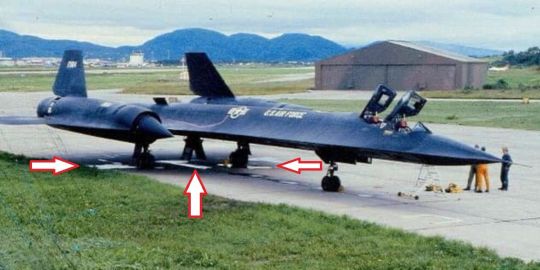
SR-71 crew chief explains why the Blackbird never stopped to leak fuel and why SR-71s on public display are still weeping JP-7 today
A problem of flying at Mach 3+ was that at the time when the SR-71 was devised no sealant would withstand the extreme heat that an airplane cruising at that speed would make. Hence the Blackbird leaked fuel.
SR-71 T-Shirts
CLICK HERE to see The Aviation Geek Club contributor Linda Sheffield’s T-shirt designs! Linda has a personal relationship with the SR-71 because her father Butch Sheffield flew the Blackbird from test flight in 1965 until 1973. Butch’s Granddaughter’s Lisa Burroughs and Susan Miller are graphic designers. They designed most of the merchandise that is for sale on Threadless. A percentage of the profits go to Flight Test Museum at Edwards Air Force Base. This nonprofit charity is personal to the Sheffield family because they are raising money to house SR-71, #955. This was the first Blackbird that Butch Sheffield flew on Oct. 4, 1965.
In the 1960’s, the US Air Force (USAF) developed the SR-71 Blackbird, a plane that could travel more than 3 times as fast as the sound produced by its own engines.
Throughout its nearly 24-year career, the SR-71 spy plane remained the world’s fastest and highest-flying operational aircraft. Flying at Mach 3+ from 80,000 feet, it could survey 100,000 square miles of Earth’s surface per hour. And in the off chance an enemy tried to shoot it down with a missile, all the Blackbird had to do was speed up and outrun it.
Its engineering was so cutting edge that even the tools to build the SR-71 needed to be designed from scratch.
In fact, given that the Blackbird became so hot because it cruised at a speed of Mach 3.2 conventional jet fuel could not be used in it. A jet fuel with a high flash point, and high thermal stability was required. To satisfy this requirement Shell produced a special blend of fuel called JP-7 which has a high flashpoint to prevent it from being ignited by the heat of the airframe.
Another problem of flying at Mach 3+ was that at the time when the SR-71 was devised no sealant would withstand the extreme heat that an airplane cruising at that speed would make.
SR-71 crew chief explains why the Blackbird never stopped to leak fuel and why SR-71s on public display are still weeping JP-7 today

Fuel leakages can be seen under this SR-71 Blackbird.
Hence the Blackbird leaked fuel.
Everyone talks about how the SR-71 leaks fuel. They often snicker about it like they’re insinuating that the Blackbird was flawed in a significant way. But, as we have just explained, this is not true.
I asked Master Sgt. Floyd Jones (ret.) who worked on the Blackbird for nearly 20 years (according to Air Zoo, Jones entered the USAF in 1966. Assigned to Beale AFB in 1967, Jones became an SR-71 Crew Chief/Phase Inspector. After international assignments, he returned to Beale in 1980 where he became an SR-71 Inspection Dock Chief. Later, Jones worked with SR-71 flight testing and scheduled an SR-71 aircraft wash at Beale) if the Blackbird continued to leak fuel, even when it was flying. Here’s his answer.
‘During the PDM [Phase Depot Maintenance], over 10,000 man-hours were expended for fuel tank repair. When the SR was turned over to the Air Force the fuel leaks were mostly fixed. But after flying at speed, the leaks started to return.
‘You need to understand what constitutes a fuel tank on the SR-71.
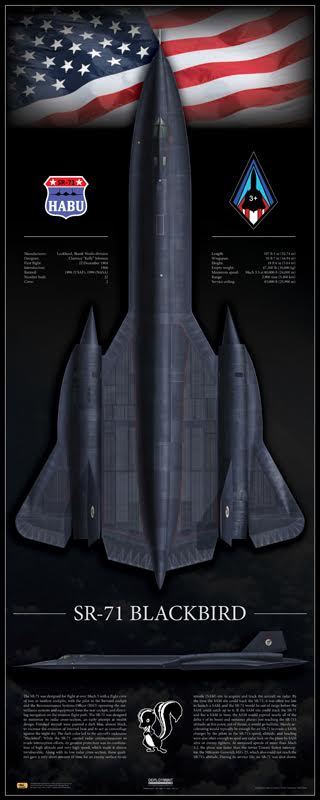
SR-71 print
This print is available in multiple sizes from AircraftProfilePrints.com – CLICK HERE TO GET YOURS. SR-71A Blackbird 61-7972 “Skunkworks”
‘It starts with an aircraft structure that is sealed with a polymer sealant on all edges and seems.
‘After flying at speed and altitude, the sealant starts to crack, thus creating a leak. Since we couldn’t find a sealant that could withstand the extreme temperature changes a plus 500 degrees to a minus 30.’
Jones concludes;
‘So yes, the SR-71 would continue to leak under all conditions. It never stopped even today 30 years after they were put on public display. They are weeping JP-7 fuel.’
Be sure to check out Linda Sheffield Miller (Col Richard (Butch) Sheffield’s daughter, Col. Sheffield was an SR-71 Reconnaissance Systems Officer) Twitter Page Habubrats SR-71 and Facebook Page Born into the Wilde Blue Yonder for awesome Blackbird’s photos and stories.
@Habubrats71 via X

39 notes
·
View notes
Text
Applications of Hastelloy B2 Round Bars in the Chemical and Aerospace Industries
Hastelloy B2 is a high-performance alloy known for its excellent resistance to corrosion, particularly in highly acidic environments. This makes it a popular choice in industries such as chemical processing and aerospace. One of the key forms in which Hastelloy B2 is supplied is as Hastelloy B2 round bars, which are used in a variety of critical applications where strength and resistance to corrosion are essential.
1. Chemical Industry Applications
In the chemical industry, Hastelloy B2 round bars are primarily used for equipment and components that come into contact with highly corrosive chemicals. This alloy’s ability to resist attack from acids, especially hydrochloric acid and other chlorides, makes it ideal for use in reactors, piping systems, and heat exchangers where exposure to aggressive chemicals is common.
For example, Hastelloy B2 round bars are used to make valves, pumps, and pressure vessels that handle harsh chemical reactions. These components must not only be resistant to corrosion but also capable of maintaining strength under high pressure and temperature. Hastelloy B2, with its strong resistance to stress corrosion cracking and pitting, helps ensure the durability and reliability of these critical parts.
2. Corrosion-Resistant Equipment
The chemical industry often deals with substances that can cause severe corrosion over time, leading to equipment failures, maintenance costs, and safety hazards. Hastelloy B2 round bars provide an effective solution by offering long-lasting corrosion resistance, thus reducing the need for frequent repairs and replacements. Whether it’s in storage tanks, reaction vessels, or piping systems, Hastelloy B2’s ability to withstand chemical exposure ensures smooth operations and lowers operational costs.
3. Aerospace Industry Applications
In the aerospace industry, materials used must withstand extreme temperatures, pressures, and exposure to various atmospheric conditions. Hastelloy B2 round bars are used in components that require high strength and resistance to heat and corrosion, making them a popular choice for aircraft and spacecraft parts.
For example, Hastelloy B2 round bars are used to create turbine blades, engine components, and exhaust systems in aerospace applications. These parts are exposed to high heat and pressure during flight, and Hastelloy B2's excellent resistance to heat and corrosion ensures that they perform reliably. The alloy's strength, even at elevated temperatures, makes it ideal for maintaining the structural integrity of aerospace components.
4. Heat Exchangers and Other High-Temperature Applications
In both the chemical and aerospace industries, heat exchangers are essential for transferring heat between different substances. These components must be made from materials that can handle high temperatures without degrading. Hastelloy B2 round bars are an excellent choice for heat exchangers in both industries, as they maintain their strength and resist corrosion at high temperatures. This makes them perfect for use in systems that involve heating or cooling chemical substances or exhaust gases.
5. Welding and Fabrication
Another significant application of Hastelloy B2 round bars is in welding and fabrication. In both the chemical and aerospace industries, welding is often required to join parts made from Hastelloy B2. Due to its excellent welding properties, Hastelloy B2 round bars can be easily welded to create custom parts and components for various industrial applications. This flexibility is crucial in industries where bespoke solutions are often needed to meet specific design or operational requirements.
6. Specialized Components for Harsh Environments
Both the chemical and aerospace industries deal with environments where few materials can thrive. Hastelloy B2 round bars are ideal for applications in these extreme environments because they maintain their structural integrity and resist damage from corrosive chemicals, high temperatures, and mechanical stress. These properties make Hastelloy B2 a preferred material for specialized components used in equipment such as distillation columns, reactors, and components within rocket engines.
7. Long-Term Durability and Performance
In industries like chemical processing and aerospace, downtime due to equipment failure can be costly. The durability and high-performance characteristics of Hastelloy B2 round bars help prevent such issues. Their resistance to corrosion and high strength ensure that they last longer, requiring fewer repairs and replacements. This leads to increased productivity, fewer operational disruptions, and reduced maintenance costs.
Conclusion
Hastelloy B2 round bars are essential components in both the chemical and aerospace industries due to their excellent resistance to corrosion, high strength, and ability to perform in extreme environments. Whether in chemical reactors, heat exchangers, or aerospace engine parts, Hastelloy B2’s durability and performance make it a reliable choice for industries that require materials capable of withstanding harsh conditions. By using Hastelloy B2 round bars, companies in these sectors can ensure that their equipment operates efficiently, safely, and for longer periods, ultimately contributing to the success and sustainability of their operations.
0 notes
Text
Soar High with Aircraft Maintenance Engineering at MGI
Launch your career in aviation with Millennium Group of Institutions’ Aircraft Maintenance Engineering (AME) course. Get hands-on training in aircraft repair, maintenance, and safety, preparing you for technical roles in the aviation industry. Fly into your future with MGI.
0 notes